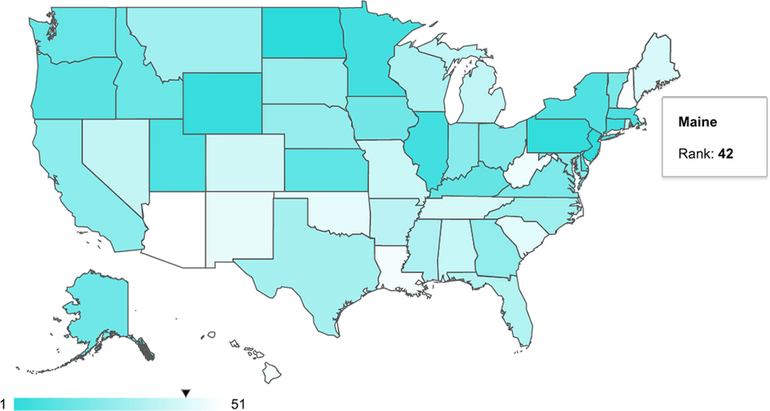Maine gets poor marks for teacher compensation in WalletHub report

Teachers in Maine do worse than most of their peers in other states in terms of compensation and job security, according to a report by personal financial website WalletHub out this week.
The study compared the 50 states and the District of Columbia using 23 key indicators of so-called "teacher friendliness," assigning rankings in the categories of opportunity and competition and academic and work environment as well as overall.
Maine was No. 42 overall, sandwiched between Tennessee (No. 41) and the District of Columbia (No. 43) and, and fourth from last at No. 48 in the opportunity and competition category, which takes into account factors including salaries, income growth potential, pensions and projected compensation in 2026.
Maine was also on a the list of states with the lowest teacher salaries adjusted for cost of living, while New England peer Massachusetts was among states with the highest teacher salaries.
In terms of academic and work environment, however, Maine fared much better, coming in at No. 11 in the nation, though that received less weighting in the overall rankings. Factors taken into account included school system quality, teacher union strength, average commute times and working-mom friendliness.
North Dakota, New Jersey and Pennsylvania, were at the top of the class in terms of overall rankings, at No. 1, 2 and 3, respectively, while New Hampshire (No. 50) and Hawaii (No. 51) were the laggards.
The report's authors note that while job pressures, low pay and lack of mobility force many teachers to leave the profession early on, states where they're more fairly paid and treated see less turnover.
In June, Gov. Janet Mills signed into law the state's $8 billion fiscal year 2020-21 budget that expands funding for higher education and training programs, and calls for increasing the state's share of education funding to nearly 51%.














0 Comments